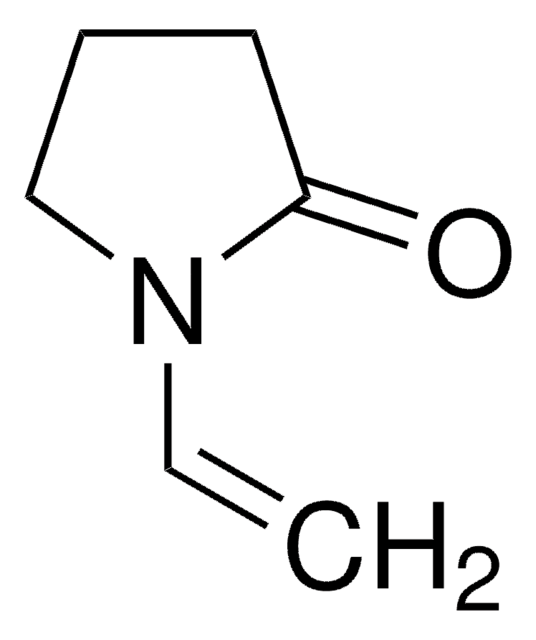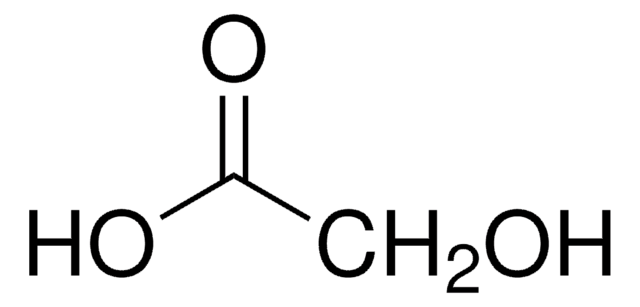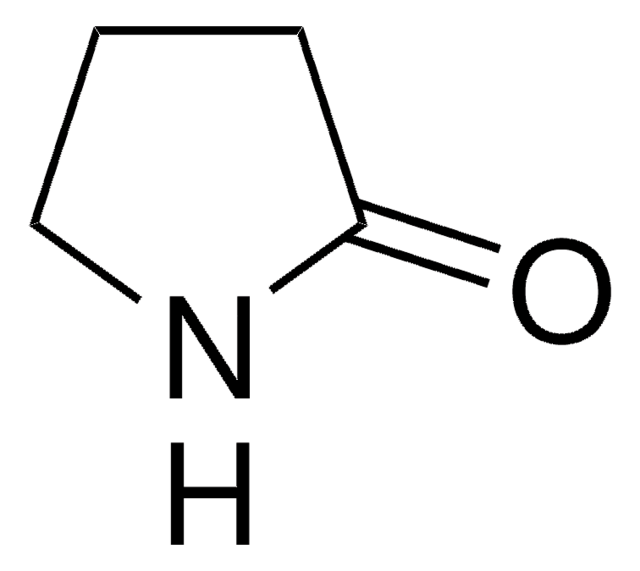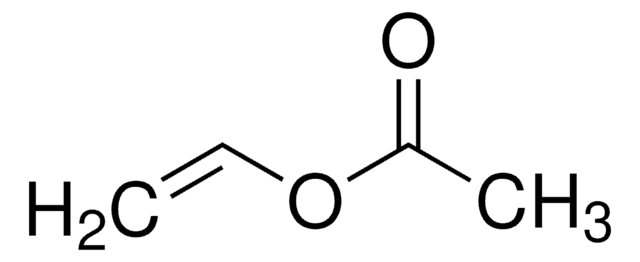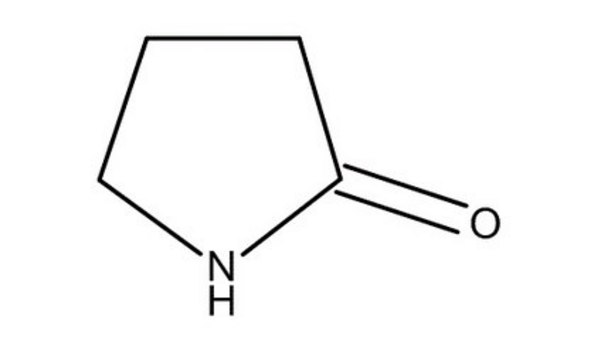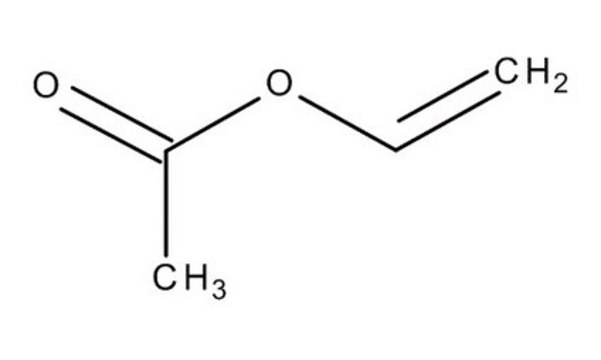8.08518
1-Vinyl-2-pyrrolidone
(stabilized with N,N′-di-sec-butyl-1,4-phenylenediamine) for synthesis
Synonym(s):
1-Vinyl-2-pyrrolidone, 1-Vinyl-2-pyrrolidinone
About This Item
Recommended Products
vapor pressure
0.12 hPa ( 20 °C)
Quality Level
Assay
≥98.0% (GC)
form
liquid
autoignition temp.
240 °C
potency
1022 mg/kg LD50, oral (Rat)
expl. lim.
1.4-10 % (v/v)
pH
9-10 (20 °C, 100 g/L in H2O)
mp
13-14 °C
transition temp
flash point 95 °C
solubility
soluble 52.1 g/L
density
1.04 g/cm3 at 20 °C
storage temp.
2-30°C
SMILES string
N1(CCCC1=O)C=C
InChI
1S/C6H9NO/c1-2-7-5-3-4-6(7)8/h2H,1,3-5H2
InChI key
WHNWPMSKXPGLAX-UHFFFAOYSA-N
Application
- The Promising Potential of Gallium Based Liquid Metals for Energy Storage.: This review discusses the unique properties of Gallium-based liquid metals, including GaInSn alloys, for applications in energy storage systems. Their high conductivity and low viscosity make them ideal for use in flexible electronics and battery technologies (Rehman WU et al., 2024).
- Liquid Metal Encased in Biomimic Polydopamine Armor to Reinforce Photothermal Conversion and Photothermal Stability.: This study explores the encapsulation of GaInSn liquid metal in polydopamine to enhance photothermal conversion efficiency and stability, showing promise for applications in solar thermal energy and photothermal therapy (Wei W et al., 2024).
Analysis Note
Density (d 20 °C/ 4 °C): 1.043 - 1.044
Identity (IR): passes test
Due to its specific melting range the product may be solid, liquid, a solidified melt or a supercooled melt.
The material is stabilised N,N´di-sec-butyl-p-phenylendiamine. At time of analytical testing a content of >10 ppm stabiliser was determined.
Signal Word
Danger
Hazard Statements
Precautionary Statements
Hazard Classifications
Acute Tox. 4 Dermal - Acute Tox. 4 Inhalation - Acute Tox. 4 Oral - Carc. 2 - Eye Dam. 1 - STOT RE 2 - STOT SE 3
Target Organs
Respiratory system
Storage Class Code
10 - Combustible liquids
WGK
WGK 1
Flash Point(F)
203.0 °F - closed cup
Flash Point(C)
95 °C - closed cup
Certificates of Analysis (COA)
Search for Certificates of Analysis (COA) by entering the products Lot/Batch Number. Lot and Batch Numbers can be found on a product’s label following the words ‘Lot’ or ‘Batch’.
Already Own This Product?
Find documentation for the products that you have recently purchased in the Document Library.
Our team of scientists has experience in all areas of research including Life Science, Material Science, Chemical Synthesis, Chromatography, Analytical and many others.
Contact Technical Service